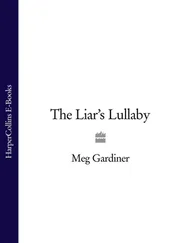An impressive modernist ‘drop-in’ Health Centre (designed by the Georgian émigré architect Berthold Lubetkin, who had already designed a prototype TB clinic for Dr Philip Ellman, the Medical Officer of Health for East Ham and a member of the Socialist Medical Association, which was never built) opened in Finsbury in North London, another very poor borough, in 1938. Built like a ‘megaphone for health’, with two wings splayed out from a central axis, it housed a TB clinic, a foot clinic, a dental clinic, a mother and baby clinic, a disinfecting station, a lecture hall and a solarium where the sun-starved children of the borough might benefit from ultraviolet-ray treatment, as well as fumigating facilities and a mortuary in the basement. So representative of a better life for all those who had previously suffered ‘C3’-level health — and health care — was Finsbury that it was depicted on one of Abram Games’ wartime posters urging ‘Your Britain: Fight for it Now’.
But for those not resident in one of those London boroughs and without reasonable means, provision for the unwell in the 1930s remained an example of hotchpotch availability, lack of funding and reluctance to extend state involvement, all resulting in inequality of access to medical services.
Men working in insurable occupations and earning less than £250 a year were covered by a contributory National Health Insurance scheme, introduced in 1913, to (barely) tide them over in times of sickness and provide basic medical treatment and medicines from a ‘panel’ doctor. However, by 1936 only around twenty million people, about 40 per cent of the total population of 47.5 million, including six million working women, were covered. They did not include dependent wives (except in the case of maternity benefit) and children. Those earning over £250 a year would have to make their own private sickness insurance arrangements — though they could contribute to the NHI scheme through voluntary payments if they could afford to.
The NHI scheme did not cover dental or ophthalmic treatment, though some of the larger ‘approved societies’ (usually friendly societies or industrial insurance companies, and a few trade unions) which administered the scheme might offer such fringe benefits to attract customers. This meant that for many working-class men and women tooth decay and premature toothlessness were inhibiting and intermittently painful features of life (‘Teeth, teeth, teeth, they are half the trouble [with women’s health],’ wrote a country district nurse in February 1938), while Woolworths offered ‘do it yourself’ eye tests for those unable to afford to consult an ophthalmologist about their need for spectacles.
There were continual complaints that those who received their treatment from the NHI scheme, known as being ‘on the panel’, got inferior treatment. At least 5,000 doctors remained outside the scheme, and those operating within it in suburban or rural areas often derived most of their income from private patients. A GP employing one assistant could easily have 4,000 panel patients (for each of whom he would receive a capitation fee of about 9s.6d), and it was quite usual for a single doctor to be responsible for as many as 2,500 patients, so those in poor areas with a large percentage of their patients ‘on the panel’ were likely to give only cursory consultations.
In industrial areas the doctor’s surgery would often be housed in a shop where the window would be painted halfway up to ensure some degree of privacy. Patients would queue outside (even when it was raining) until it was their turn to see the doctor. Doctors were not salaried (nor were hospital consultants), so they relied on fees and/or insurance payments, the latter of which were invariably lower, so in general poorer areas, where there were few if any fee-paying patients, were served by either less able or more altruistic doctors. In more prosperous middle-class areas, doctors would usually see their patients in the front room of their own homes. The fee-paying patient would have an appointment and be shown in at the front door by the doctor’s wife (or maybe a maid, if finances and status permitted), whereas panel patients would enter by the surgery door, and sit and wait until the doctor was ready to see them. The surgery would smell of phenol, since most GPs were expected to perform operations such as removing appendixes and tonsils, hysterectomies, hernia repairs and suchlike, although increasingly these took place in the local cottage hospitals found in suburbs, smaller towns and rural areas, which by 1935 provided around 10,000 beds. Or patients might request a home visit (more readily agreed to for private patients), when all the technology available would be the instruments the doctor could carry in his (or very occasionally her) Gladstone bag.
Eileen Whiteing remembered that if influenza or tonsillitis were suspected in her comfortable Surrey home, ‘Dr Cressy would be sent for and he usually prescribed the dreaded “slops” which meant that we were only to be given such things as steamed fish, poached eggs, beef tea, milk puddings and so on, until he called again in a day or so.’ Doctors’ fees varied depending on the area and sometimes on the patient’s ability to pay. A doctor attending poorer families would usually require to be paid cash at the time of a consultation or visit (as earlier ‘sixpenny doctors’ had) rather than sending in a bill. If an operation were needed, the surgeon’s and anaesthetist’s fees would have to be found, plus nursing home fees.
Having a baby for a middle-class woman often meant a private nursing home, whereas for most working-class women it would be a home confinement, possibly but by no means necessarily with the help of a midwife who delivered babies as the sort of community service that ‘wise women’ had provided for other women down the ages, often at low cost and sometimes with inadequate standards of medical knowledge or hygiene, as a ‘Report on Maternal Mortality in Wales’ showed. It was not until 1936 that the Midwives Act obliged local authorities to provide trained midwives, and it was not until 1946 that the number of hospital births exceeded those at home.
So the uninsured, the unemployed who had exhausted their sickness benefit entitlement and whose names were removed from doctors’ lists as ‘ceased to be insured” (although doctors were no longer paid to treat such people, ‘If they were well known to us, we felt morally under an obligation to attend to their wants when asked to’), the dependents of those covered by the NHI and the poor and old, would have to spatchcock together medical care as they did other social services. In the first instance they were likely go to the local chemist for a bottle of patent medicine (almost £30 million a year was spent on patent medicines during the 1930s, and it was not until the 1939 Cancer Act that the advertising of cancer ‘cures’ bought over the counter was banned), and only if that was ineffective would they seek medical advice. They might be able consult a doctor who participated in the Public Medical Services, or be treated by those employed by enlightened local authorities such as Glasgow, Oxford or Mansfield in Nottinghamshire. Most local authorities, though, provided only those services they were statutorily obliged to, mainly concerned with infant and maternity care, or mental and infectious diseases. People might join a doctor’s ‘club’ and pay a small amount each week, or go to the outpatients’ department of a public hospital.
Married women were particularly disadvantaged if they could not afford to pay for their medical care. They were not covered by the NHI scheme, and were considered a poor risk by insurance companies since the mass of burdensome ‘dull diseases’ contingent on their biology would be likely to prove expensive — a burden the Chief Medical Officer of Health, Sir George Newman, admitted privately he was reluctant to enquire into too deeply, since it was ‘a wandering fire to which there are no bounds’ that would create demands way beyond the resources of the Ministry of Health. There were few women general practitioners, since most preferred to work directly with women and children in clinics, and many women were reluctant to take their troubles to a male doctor, so they struggled on with varicose veins, anaemia, prolapsed wombs, phlebitis, haemorrhoids, rheumatism, arthritis, chronic backache, undernourishment and exhaustion without ever seeking medical advice. Death in childbirth remained at much the same level –4.1 per thousand — in 1935 as it had been in 1900, and in the depressed areas of South Wales and Scotland it was 6 per thousand. Better antenatal care as well as improved living conditions might have helped, but the primary cause of death in childbirth was medical, and it was not until the mid-1930s that puerperal fever, which presented the gravest danger, became treatable with sulphonamide drugs.
Читать дальше












